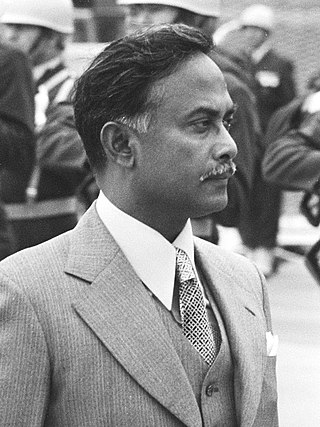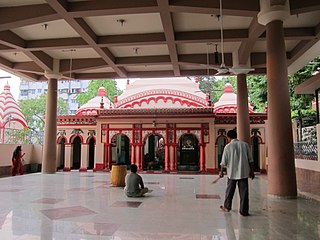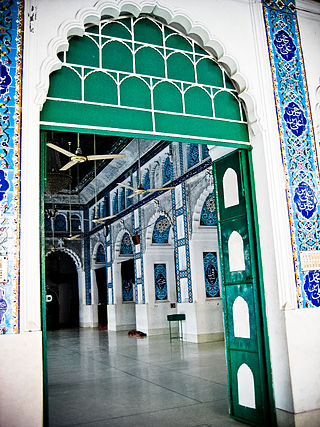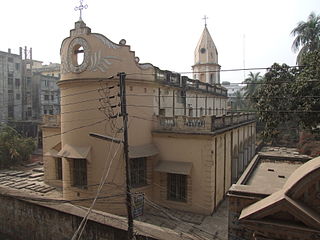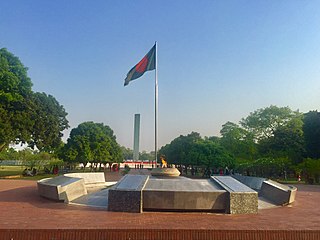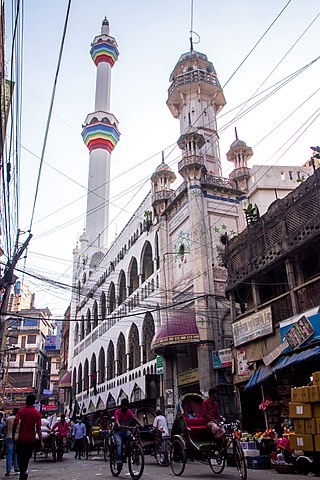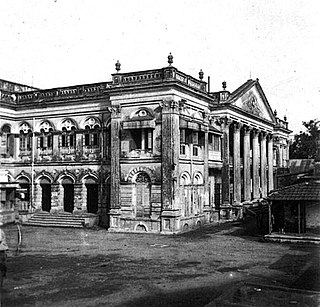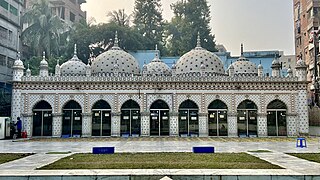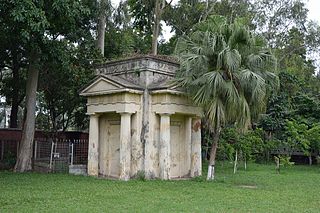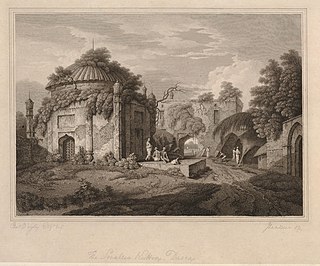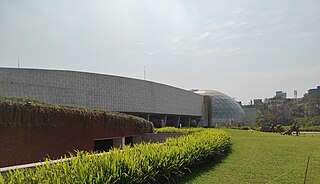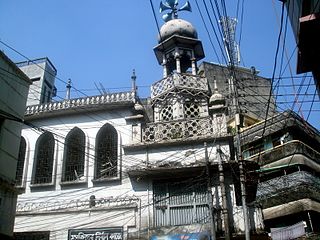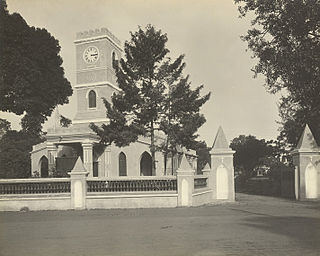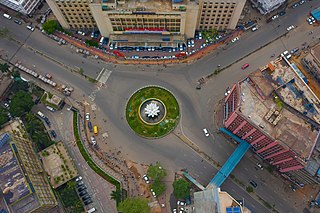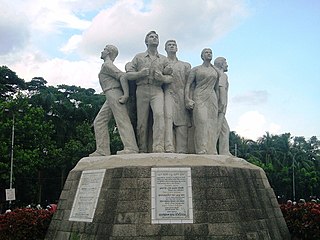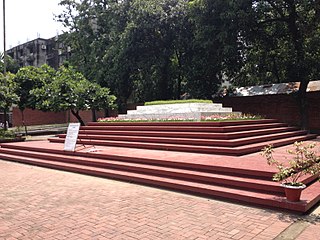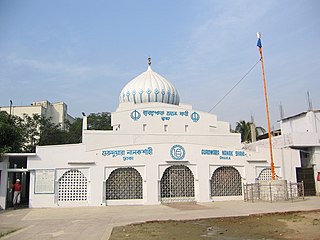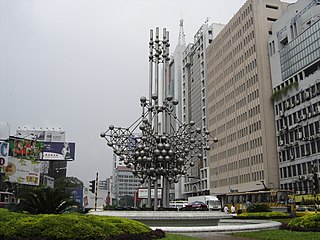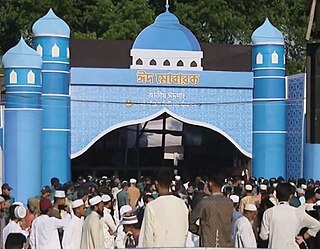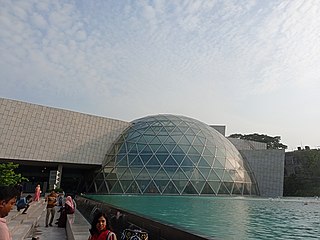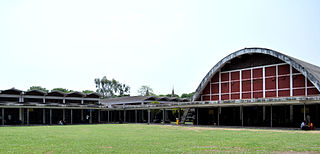31 Sights in Dhaka, Bangladesh (with Map and Images)
Legend
Premium Sights
Book tickets, guided tours and activities in Dhaka.
Guided Free Walking Tours
Book free guided walking tours in Dhaka.
Welcome to your journey through the most beautiful sights in Dhaka, Bangladesh! Whether you want to discover the city's historical treasures or experience its modern highlights, you'll find everything your heart desires here. Be inspired by our selection and plan your unforgettable adventure in Dhaka. Dive into the diversity of this fascinating city and discover everything it has to offer.
Sightseeing Tours in Dhaka1. Tomb of Ziaur Rahman
Ziaur Rahman BU HJ HOR was a Bangladeshi military officer, freedom fighter and politician who served as the sixth President of Bangladesh from 1977 until his assassination in 1981. One of the leading figures of country's Liberation War, he broadcast the Bangladeshi declaration of independence on 27 March 1971 from Chittagong. He was the founder of Bangladesh Nationalist Party (BNP). He previously served as the third chief of army staff from 1975 to 1978 with a minor break.
2. Baitul Mukarram National Mosque
Baitul Mukarram, officially Baitul Mukarram National Mosque, is a mosque located at the center of Dhaka, the capital of Bangladesh. The mosque was completed in 1968. It has a capacity of more than 42,000 worshipers.
3. Dhakeshwari National Temple
Dhakeshwari National Temple is a Hindu temple in Old Dhaka, Dhaka, Bangladesh. It is state-owned, giving it the distinction of being Bangladesh's 'National Temple'. The name "Dhakeshwari" means "Goddess of Dhaka". Bangladesh is the only country in the World to have a National Hindu Temple. It's one of the holiest Shakta pithas where the gem of Devi sati's crown fell but the gem is lost long ago and the main ancient Vigraha or stone murti is relocated to Kumortuli West Bengal during the partition time by the chief priest due to increased attacks on Hindu temples in Bangladesh.
4. Burdhwan House
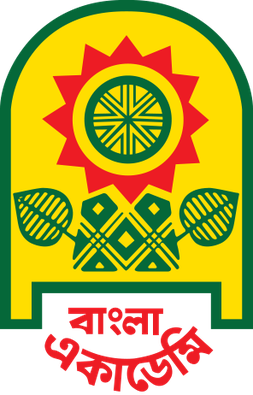
The Bangla Academy is the official regulatory body of the Bengali language in Bangladesh. It is an autonomous institution funded by the Government of Bangladesh that fosters the Bengali language, literature and culture, works to develop and implement national language policy and conducts original research in Bengali. Established in 1955, it is located in the Burdwan House in Shahbagh, Dhaka, within the grounds of the University of Dhaka and Suhrawardy Udyan. The Bangla Academy hosts the annual Ekushey Book Fair.
5. ImamBara
The Hussaini Dalan is an Imambara that was originally built during the later half of the Mughal rule in the 17th century in Dhaka. It was built as the Imambara of the Shia Muslim community. Hussaini Dalan serves as the main Hussainiya of Dhaka, or venue for majlis or gatherings held during the month of Muharram; the ten-day religious gathering commemorates the martyrdom of Hussain, the grandson of the Islamic prophet Muhammad.
6. Armenian Church
The Armenian Church, also known as Armenian Apostolic Church of the Holy Resurrection, is a historically significant architectural monument situated in the Armanitola area of old Dhaka, Bangladesh. The church bears testimony to the existence of a significant Armenian community in the region in the 17th and 18th centuries.
7. Suhrawardy Udyan
Suhrawardy Udyan is a national memorial and public space located in Dhaka, Bangladesh. Originally known as Ramna Race Course, it holds significant historical importance due to its association with key events in the country's history.
8. চকবাজার শাহী মসজিদ
Chawkbazar Shahi Mosque also known as Chawk Mosque is a mosque located in the Chowk Bazaar area in the old city of Dhaka, Bangladesh. The mosque was constructed in 1664 by Subahdar Shaista Khan. The mosque is known as the Shahi Mosque because it was founded by Subahdar Shaista Khan. The mosque is built above a raised platform. The three domed mosque above the platform, now transformed into a multi-storied structure was originally a copy of Shaista Khan's another three domed mosque at the Mitford Hospital compound near the Buriganga River. There are some square-shaped rooms built for the Imam and for students of the madrasa. Today the original building design has lost much of its original form through multiple renovations and extensions. The mosque is noted for having a rainbow minaret.
9. Aparajeyo Bangla
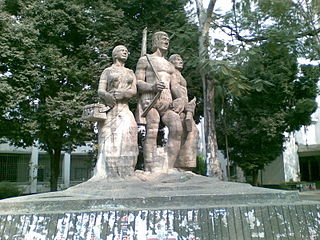
Aparajeyo Bangla is one of the most well known sculptures dedicated to the Bangladesh Liberation War in 1971. It is located in the campus of Dhaka University, just in front of the Faculty of Arts Building. In Bengali, the phrase means "Unvanquished Bengal".
10. Ruplal House
Ruplal House is a 19th-century mansion in Farashganj area in Dhaka, Bangladesh. It was built on the northern bank of the Buriganga River, beside the Buckland Dam. The house was built in 1825 by an Armenian businessman Stephen Aratoon. It was later bought by two merchants, Ruplal Das and his brother Raghunath Das, in 1840. Later, an architect firm of Calcutta, Martin Company, re-constructed this building.
11. Ramna Park
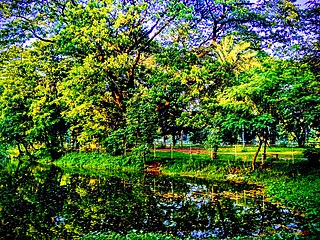
Ramna Park is a significant urban green space renowned for its historical significance and recreational amenities, situated at the centre of Dhaka, Bangladesh. Described the "lungs of Dhaka City," the 68.50-acre (277,200 m2) park was built during the British colonial era with a lake at its core, undergoing several transformations over the years and evolving into a popular public space. Additionally, Ramna Park hosts cultural events and festivals, notably, the yearly Bengali New Year celebrations, further enriching its role as a communal space for relaxation and social gatherings.
12. Tara Mosque
Star Mosque, is a mosque located in Armanitola area, Dhaka, Bangladesh. The mosque has ornate designs and is decorated with motifs of blue stars. It was built in the first half of the 19th century by Mirza Golam Pir.
13. Binat Bibi Mosque
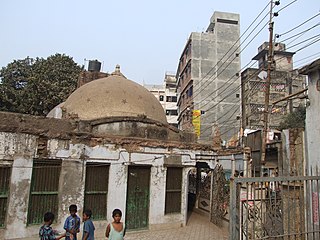
Binat Bibi Mosque is the earliest surviving mosque in Dhaka built in 1454 by Bakht Binat, the daughter of Marhamat. It was built during the rule of the Sultan of Bengal, Nasiruddin Mahmud Shah (1435–1459). The mosque is located beside the Hayat Bepari’s Bridge in Narinda area.
14. Baldha Garden
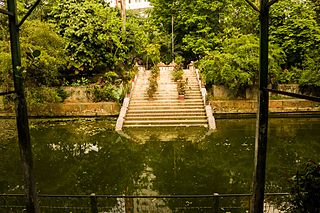
Baldha Garden is a botanical garden which spans 3.15 acres (1.27 ha) of land located at Wari in the old part of the city of Dhaka, the capital of Bangladesh. It has a collection of 672 species of plants. The Baldha Garden is now managed as a satellite unit of the National Botanical Garden by the Department of Forestry.
15. Greek Memorial
Greeks were the last among European merchants to come to Bangladesh. They came to Bangladesh around the 18th century. They constructed a memorial in Dhaka. It was constructed for the memory of the Greek merchants who died while in Dhaka. The Greek memorial was built around AD 1900, and appears like an ancient Greek temple; it is a small yellow structure on land owned by the Greek Community, which flourished in Dhaka in the 19th century. It is inside the Teacher-Student Centre (TSC) of the University of Dhaka and stands alone on the main Shahbagh Avenue and faces Ramna Race Course. To its southern side is the Atomic Research Centre and to its north a student's centre. It is considered to be the only such structure extant outside Greece.
16. Choto Katra
Choto Katra is one of two Katras built during Mughal's regime in Dhaka, Bangladesh. It was constructed in 1663 by Subahdar Shaista Khan. It is on Hakim Habibur Rahman lane on the bank of the Buriganga River. It was built to accommodate officials and Shaista Khan's expanding family. Chhota Katra is slightly smaller than Bara Katra, but similar in plan and about 185 metres east of it.
17. Bangladesh Army Museum
Bangladesh Military Museum, officially named as Bangabandhu Military Museum is a military museum in Dhaka, Bangladesh. Administered by the Bangladesh Army, the museum is located right beside the Bangabandhu Sheikh Mujibur Rahman Novo Theatre at Bijoy Sarani of the capital Dhaka. The museum has a collection of Bangladesh's military history, heritage, success stories and various weapons and ammunition. It is now most popular to the young generation and also to the ll ages people.
18. Churihatta Jame Moshjid
The ancient Churihatta Mosque or Churihatta Mosque is an archaeological site in Bangladesh, which is located in Tematha of Umesh Chandra Dutta Lane and Haider Baksh Lane in Old Dhaka Metropolis. Locally the mosque was known as Churihatta Shahi Mosque. The actual location of the mosque was 26-27 Sheikh Haider Baksh Lane, a little west of Chawkbazar. According to historical data, the mosque is 377 years old (2021 AD). However, the ancient mosque architecture is now extinct; Modern architecture has been built in that place.
19. St Thomas Church
St Thomas Cathedral Church is a cathedral belonging to the Diocese of Dhaka of the Church of Bangladesh, which is a United Protestant denomination that formed as a result of a merger between the Anglican and Presbyterian churches in the region. It is the seat of the diocese. The church premise was in an area of lush greeneries with the famous Bahadur Shah Park at a stone's throw distance on the south. The north–south axial Nawabpur Road/Johnson Road, the most important commercial street connecting the old part of the city with the new, is on the west and separated the area from the court, Bank, DC's office and Jagannath University buildings across it. In fact the church overlooking the greens is a major focal of the city centre in the nineteenth century.
20. National Museum of Science & Technology
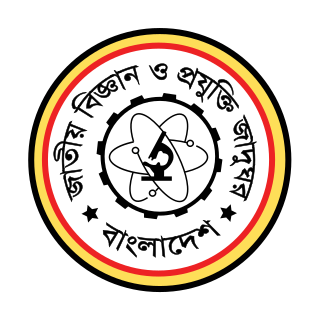
National Museum of Science and Technology (NMST) in Dhaka, Bangladesh was founded on April 26, 1965, by the Pakistani government and became a part of Bangladesh's Ministry of Science and Technology following the Bangladesh Liberation War. It was first based in the Dhaka Public Library, and moved a number of times before its permanent home was completed in 1981. The NMST serves as Bangladesh's only science museum and organizes science education activities at a national level.
Wikipedia: National Museum of Science and Technology (Bangladesh) (EN)
21. Moder Gorob
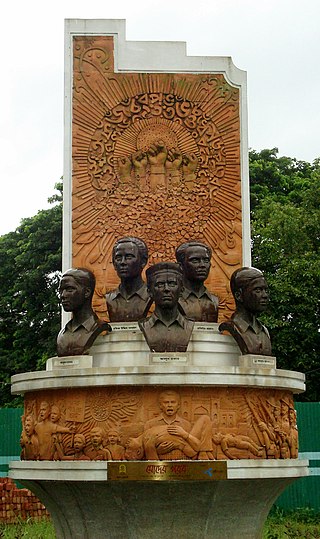
Moder Gorob or Our Pride is a sculpture situated in front of Bangla Academy building in Dhaka, Bangladesh. It was dedicated to the memory of those killed during the Bengali Language Movement demonstrations of 1952, when protesters demanding Bengali as a state language of former Dominion of Pakistan were massacred by Pakistan Police.
22. Shapla Square
Shapla Square is a huge sculpture at the heart of Motijheel near the center of Dhaka, the capital of Bangladesh. It depicts a Shapla, the national flower of Bangladesh. The sculpture is surrounded by a fountain.
23. Anti Terrorism Raju Memorial Sculpture
Anti Terrorism Raju Memorial Sculpture is a sculpture located in University of Dhaka campus of Bangladesh. It was created by Shaymol Chowdhury and considered one of the best sculptures in Bangladesh. It is dedicated to the memory of a student of Dhaka University named Moin Hossain Raju an activist of Bangladesh Students' Union who was killed while protesting against Terrorism. It was built in the late 1990s.
24. Tomb of National Poet Kazi Nazrul Islam
Mausoleum of Kazi Nazrul Islam is a mausoleum in Dhaka, Bangladesh. It marks the grave of the 20th century writer, poet and musician Kazi Nazrul Islam, Bangladesh’s national poet. He died 29 August 1976.
25. Guru Duara Nanakshahi
Gurdwara Nanak Shahi is the principal Sikh Gurdwara in Dhaka, Bangladesh. It is located at the campus of the University of Dhaka and considered to be the biggest of the 9 to 10 Gurdwaras in the country. The Gurudwara commemorates the visit of Guru Nanak (1506–1507). It is said to have been built in 1830. The present building of the Gurdwara was renovated in 1988–1989. The parkarma verandah had been constructed on all four sides of the original building to provide protection.
26. SAARC Fountain
SAARC Fountain is a fountain in Dhaka, Bangladesh. It is situated at Kawran Bazar, at the intersection of Panthapath, Kazi Nazrul Islam Avenue, and Sonargaon Road, and is adjacent to the Pan Pacific Sonargaon hotel.
27. Holy Rosary Church
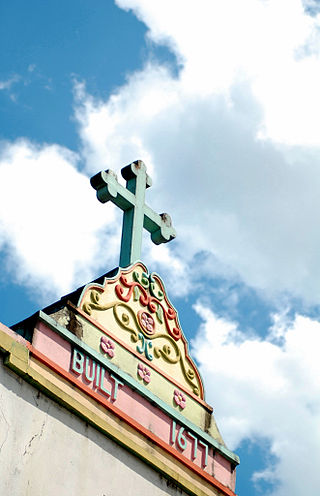
Holy Rosary Church is a Roman Catholic church in the Tejgaon area of Dhaka. It is also known as Tejgaon Church and once popularly called the Japmala Queen Church. Under this Catholic church has 17,120 Catholics. Fr. Kamal Andreas Corraya is parish priest of this church and Fr. Mintu Lawrence Palma, Fr. Antony Ripon D' Rozario and Fr. Sony Martin Rodrigues are serving there as assistant parish priest. Each Sunday Catholics gather there for Sunday mass and thousands devotee join there.
28. Mirpur Buddhijibi Shahid Minar
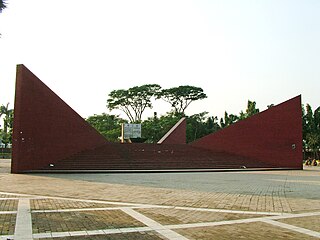
Mirpur Martyred Intellectuals Memorial is located in Mirpur, Dhaka, the capital of Bangladesh. It was built in memory of the intellectuals killed by the Al-Badr forces on December 14, 1971. On December 22, 1972, the then Prime Minister of Bangladesh, Sheikh Mujibur Rahman, unveiled the plaque of this monument. Its architect was Mostafa Harun Kuddus Hili.
29. National Eidgah
The National Eidgah of Bangladesh is the central Eidgah of the two biggest festivals of the Muslims of Bangladesh, Eid-ul-Fitr and Eid-ul-Azha prayers. It is located in the High Court premises of Dhaka district. Important administrative personalities of Bangladesh perform Eid prayers in this Eidgah. National Eidgah is an Eid prayer place designated by the Government of Bangladesh. The President, Chief Justice, cabinet members, chiefs of the three services, parliament members, politicians, military and civil officials and people of different classes and professions offer prayers here.
30. Bangladesh Military Museum
Bangabandhu Military Museum is a museum located in Bijoy Sarani, Dhaka, the capital of Bangladesh. The museum is controlled by the Bangladesh Army. The museum is equipped with the history, heritage, achievements of the armed forces of Bangladesh and the collection of various weapons and weapons.
31. World War Memorial
Teacher-Student Centre, also known as TSC of the University of Dhaka is a building on the Dhaka University campus in Shahbagh, Dhaka, Bangladesh. The centre was established in 1961 by the Dhaka University by the Division of Public Affairs.
Wikipedia: Teacher-Student Centre (TSC), University of Dhaka (EN)
Share
How likely are you to recommend us?
Disclaimer Please be aware of your surroundings and do not enter private property. We are not liable for any damages that occur during the tours.
